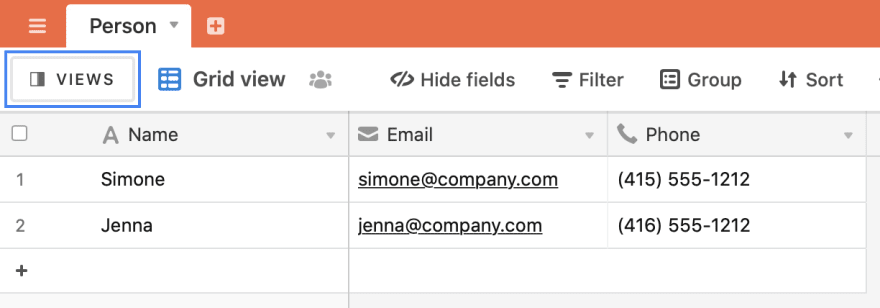Building a no-code application that sends an email and a text message when a new user registers

Max Katz
Posted on June 15, 2020
In this blog post I will give you an overview of how I built a no-code application that sends an email and a text message when a new users registers. This is part of me taking an application built with code and building it with no-code tools.
Liquid error: internal
I previously shared how to build a no-code application to send positive news.
This particular application is based on Upkar Lidder’s application built with Apache OpenWhisk. The application registers a user and sends a notification via email and text.
I used Parabola to build this application. This is how the application flow looks:
Tools used
Tools used to build this application:
- Airtable for database
- Parabola for building the application flow
- Also Parabola built-in component to send email
- Twilio to send text message
Airtable for database
I used Airtable for database. Airtable is part spreadsheet, part database that allow store and manage any data. Using the table view (Grid) I defined the data like this:

There are three columns: name, email and phone.
What I like about Airtable is that in addition to table (or spreadsheet-like) view, it allows to create additional views for the same data. One of the views is Form. You can create a form with inputs corresponding to columns in the table. When a form is submitted, the records will be automatically populated in the table.
Any form can be made public and shared. This is a very fast way to collect data without having to code anything.
This is how the sharable form looks:
Airtable can be replaced with Google Sheets and Google Forms as they provide very similar functionality. There are probably other tools that can be used as well.
Now that we have a database and a form that allows to collect data, the next step is to build a flow to get new registration records and notify via email and text message.
Application flow in Parabola
Parabola is a no-code platform. Parabola is a drag-and-drop workflow builder. You build a flow with multiple steps (nodes) and connections between steps. This is how the application flow looks:
I like Parabola because every step in a flow is like a small serverless function or a small code snippet that does something very specific. It’s a visual development tool so you don’t write any code.
Let’s look at every step in the flow.
Airtable Import step
Airtable Import is a built-in Parabola step to get data from Airtable.
Date Comparison step
Date Comparison compares a date in a column to another column with dates or current time. We need this step in order to send notifications only for new records. We are planning to run the flow once an hour (at the top of the hour). This step will add a new column (Minutes Since) which will hold the number of minutes passed between now (current time) and when the record was created. If the number of minutes is less then 60, then it’s a new record. Notifications will go only to new records.
Column Minutes Since holds time difference between now and when the record was created. The most recent record is Amy. For Amy, Minutes Since shows 2.9 minutes. This indicates it’s a new record and so a notification should be sent for this record.
In the next step we are going to select (keep) only the new records.
Row Filter step
The Row Filter step allows to keep rows that match a set of rules. The rule in this case is to keep rows where Minutes Since is less than 60 minutes.
In the next step we will create the actual notification message to send.
Text Merge step
In the Text Merge step a new column is created with the message to be sent. The same message will be used for email and text message.
Twilio SMS and Send Emails steps
The Twilio SMS and Send Emails are happening at the same time and send a text message to the number in the record and email message to the email in the record.
It’s also possible to use SendGrid to send emails in Parabola.
Now we can test the flow.
What I find very powerful is that this application was build without writing any code.
Running the application
When a new registration is submitted and the flow is run, an email and a text message will be sent.
There are two ways to run a flow in Parabola. You can run it right away, usually when you test. You can also schedule the flow to run periodically.
The text message and email are sent to phone number/email found in the record itself. It’s possible configure the flow so that the information is sent to another phone number/email.
This application can also be created with Zapier instead of Parabola.
Summary
My goal is to show that applications built with code can be re-created using no-code tools. I find it very powerful that this application can be built without using any code, and fast. Of course there is code underneath but you are using only visual tools to build the application.

Posted on June 15, 2020
Join Our Newsletter. No Spam, Only the good stuff.
Sign up to receive the latest update from our blog.














